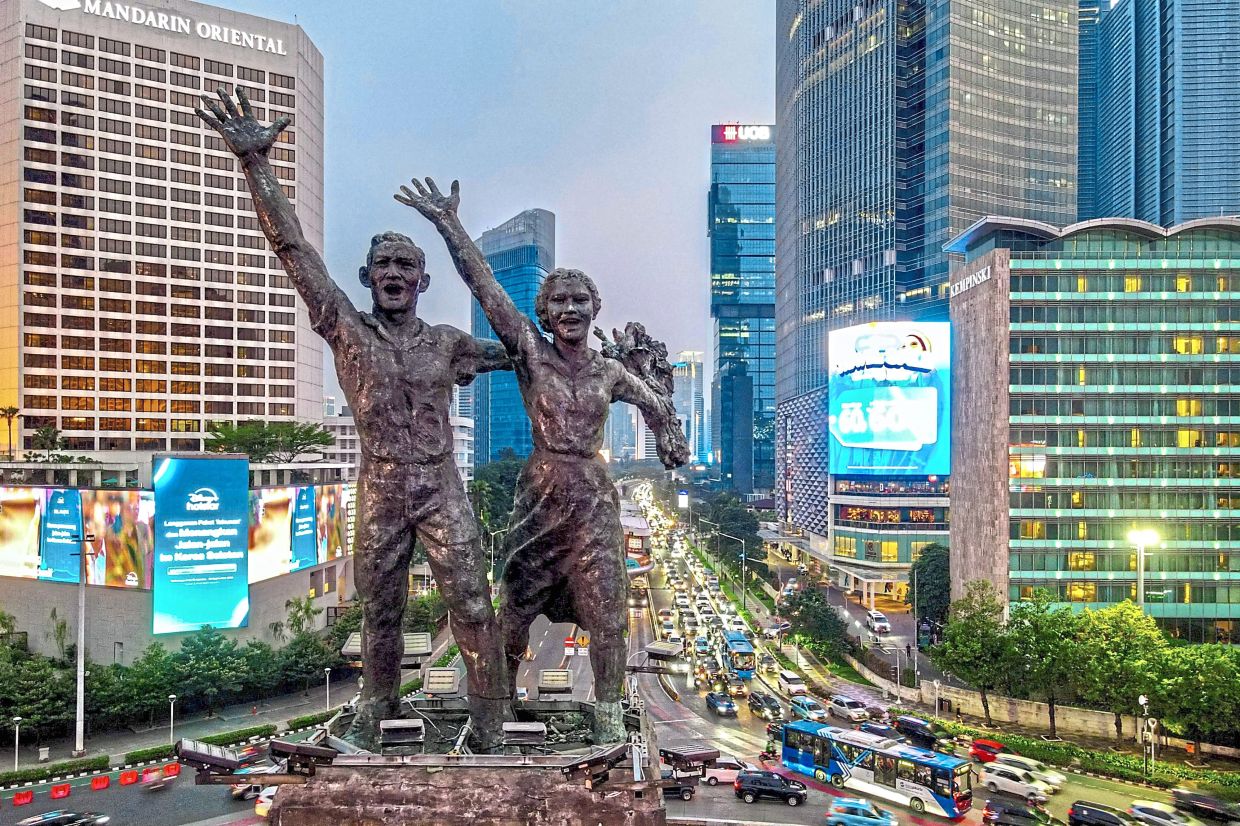THE “emerald of the equator”, a popular tagline for Indonesia, conjures the vision a nation rich in natural beauty and abundant resources.
Yet data from Statistics Indonesia (BPS) reveals a long-standing decline in the middle class and a persistent drop in formal employment opportunities.
These issues are even more critical as concerns about the middle-income trap grow, a situation where economic growth is too slow for the country to reach high-income status before its workforce ages.
Therefore, it’s crucial for Indonesia to recalibrate its approach to avoid this trap.
Moreover, data from the Finance Ministry shows that the peak of debt maturities will occur in the next few years, making it even more important to implement strategic measures that spur economic growth without burdening the national budget.
Whether the emerald of the equator shines in its golden era in 2045 depends on today’s choices.
Driving the property market
One feasible solution lies in unlocking the potential of “dead capital” and transforming it into “live or active capital” by further developing the real estate sector.
By creating an inclusive and dynamic property market, this sector has the capacity to significantly boost economic growth.
Data from Statista shows that in developed countries, the real estate sector makes a substantial contribution to gross domestic product (GDP). For example, in Singapore, real estate contributes around 3% to GDP, even though the country’s land area is just 0.04% of Indonesia’s.
In the United States, with a land area of about nine million sq km, the sector contributes about 20% to GDP.
In contrast, Indonesia, with 1.9 million sq km, sees its real estate sector contribute only around 1.9%. This highlights the immense room for growth in Indonesia’s real estate sector.
Combining this approach with initiatives supporting sustainable energy, such as the installation of solar panels and creative financing schemes for residential properties, can help the middle class grow and achieve a future with net-zero carbon emissions.
It will allow Indonesia to shine once more as the emerald of the equator and reach high and environmentally sustainable economic growth.
Dead capital is a term coined by Peruvian economist Hernando de Soto to describe assets that are difficult to utilise or optimise for various reasons.
For instance, many people own land or buildings but lack official certificates, or potential buyers may have purchasing power but are hampered by bureaucratic obstacles.
According to de Soto, the poor and middle class in many countries accumulate dead capital, while wealthier nations tend to accumulate active productive capital.
This leads to trillions of dollars in economic potential being trapped in stagnation. The Indonesian government has already taken steps to address this issue through various initiatives, such as land ownership certification programmes.
However, more needs to be done, including creating a dynamic, transparent and secure property market, whether commercial, industrial or residential, alongside incentives and streamlined bureaucratic processes that can build trust and stimulate market participations.“Reviving” dead capital is just the first step. To ensure that the real estate sector can drive both short-term and long-term growth, it is essential to create a property market that is dynamic, secure, inclusive and sustainable.
A system that enables property transactions to occur efficiently, without complex bureaucratic hurdles, is essential.
The principles outlined by Nobel laureate Alvin Roth for Market Design could be applied here: markets should be thick (many participants), safe (secure transactions) and simple (easy to participate in).
A thick market means having many buyers and sellers who can easily connect.
To encourage wider participation, the legal process for land certification must be made safer, more convenient and as simple as possible.
According to research by PT SMF, every one trillion rupiah invested in the housing sector can increase GDP by 1.9 trillion rupiah, reduce poverty by up to 6,017 people and activate 185 other sectors, such as cement and transportation services.
Statista estimates that the real estate sector’s contribution to Indonesia’s GDP is currently only around 2%, compared to 20% in the United States, showing significant growth potential in this sector.
Data also suggests stagnation in Indonesia’s property market, which requires urgent attention.
For instance, since 2017, the average yield on Jakarta apartments has tended to be lower than deposits or government bonds.
This unusual risk and reward allocation could harm both current and potential homeowners.
With deposit returns higher than apartment yields, individuals might delay purchasing property and keep their money in deposits instead.
At the same time, sellers may struggle to find buyers if they need liquidity. Prospective buyers are also uncertain whether property price inflation will outpace the returns on their financial investments, limiting their purchasing power.
Indonesia stands at a crossroads between economic development and environmental responsibility.
Seizing this opportunity to transform the economy by unlocking dead capital and creating a dynamic, sustainable property market is essential. Indonesia faces a housing backlog of 12.7 million units.With an estimated average house price of 200 million rupiah, this represents a potential economic value of 2.5 quadrillion rupiah, about 50% of Indonesia’s total GDP, which stands at around 5.5 quadrillion rupiah. — The Jakarta Post/ANN
Grace Dewi is chief of strategy at Griyasa. The views expressed here are the writer’s own.
